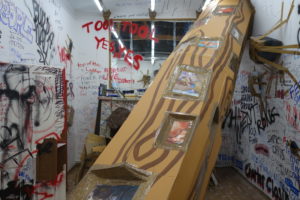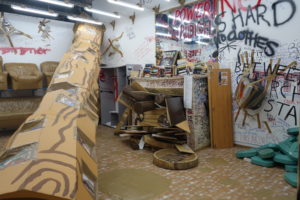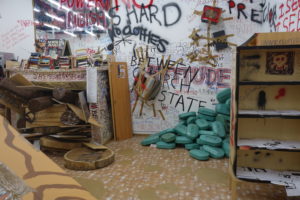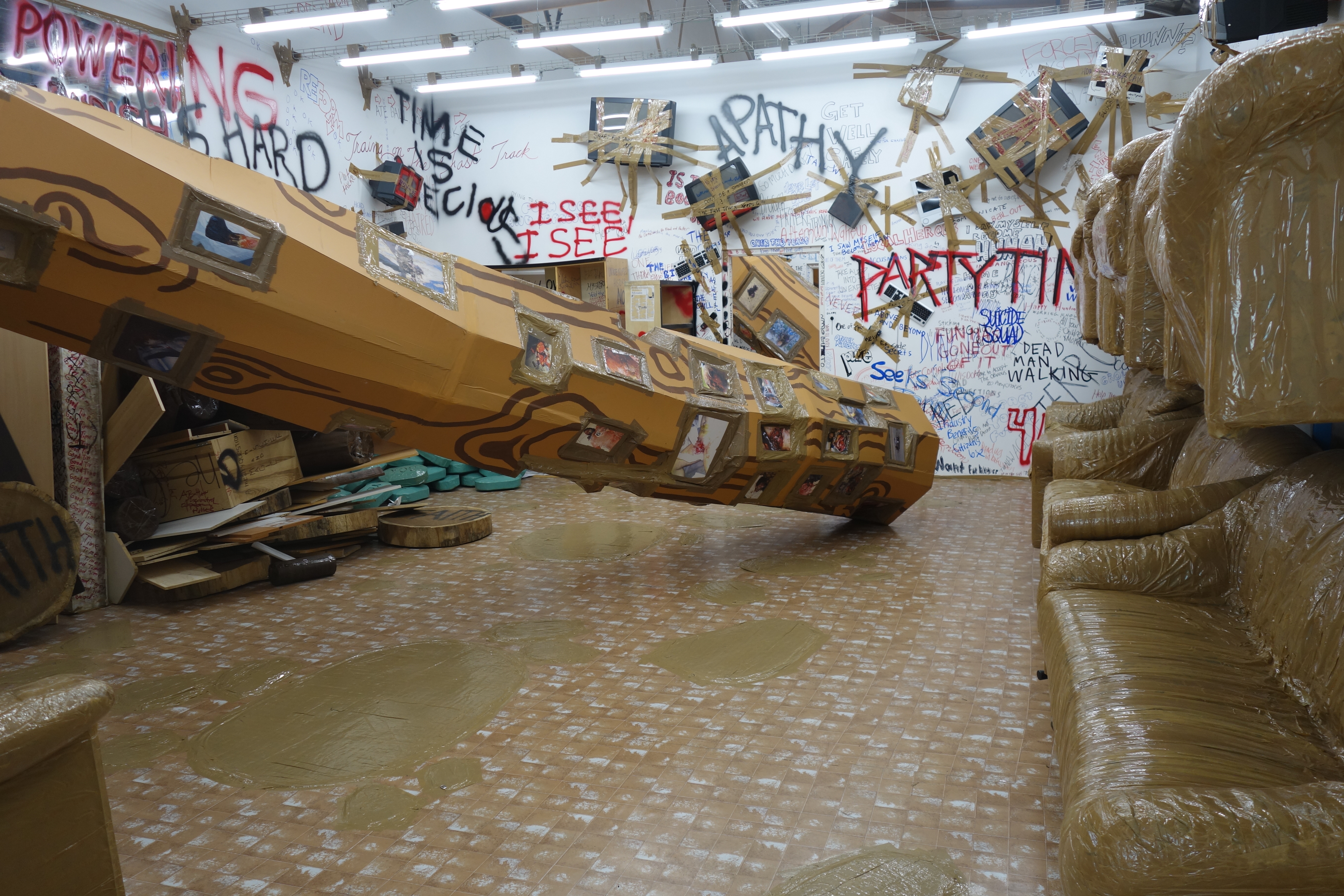Constructed in a labyrinthine series of rooms, each claustrophobic space arranged around a faux fireplace and punctuated by cardboard forms that resemble felled trees, Stand-alone, Thomas Hirschhorn’s first solo exhibition in Los Angeles, intentionally overwhelms with a glut of information. Characteristic of his work, it is confrontational, seeking to provoke response.

Thomas Hirschhorn: Stand-alone, Installation view at The Mistake Room, Los Angeles, 2016. Image courtesy of The Mistake Room and Coleccion Isabel y Agustin Coppel (CIAC).
Hirschhorn pairs “low” materials—cardboard, beige cellophane tape, graffiti, tape-entombed sofas—with high ideas: books on philosophy, aesthetics, politics and love are stacked on the mantel in each room and signal a long intellectual history. Graphic photo-images depicting victims of war—bodies flayed, decapitated, bullet-riddled, tortured—are collaged with packing tape onto the tree forms.

Thomas Hirschhorn: Stand-alone, Installation view at The Mistake Room, Los Angeles, 2016. Image courtesy of The Mistake Room and Coleccion Isabel y Agustin Coppel (CIAC).
According to the his take-away exhibition statement/diagram, Hirschhorn seeks to “work within the chaos of the world,” which seems to translate into recreating a sampling of that chaos in his installations; in doing so, he forces his audience to sort through the competing information that floods our consciousness, and take a stand. One might ask, doesn’t he abdicate his responsibility, as an artist, to communicate, but Hirschhorn draws from the example of Dada, particularly Kurt Schwitters, in a quest to upend an existing order.

Thomas Hirschhorn: Stand-alone, Installation view at The Mistake Room, Los Angeles, 2016. Image courtesy of The Mistake Room and Coleccion Isabel y Agustin Coppel (CIAC).
Stand-alone was initially made in Berlin in 2007, which begs the question, why here, why now? Hirschhorn has said he does not make political art, but makes art politically. Each room, with its untouched tomes, mothballed sofas and slogans scrawled across the walls (“no free society would allow this,” “dissent grows,” “casual colonization,” “the cost of dying is killing,” and more), exists as if it is a sitting room gone to seed.

Thomas Hirschhorn: Stand-alone, Installation view at The Mistake Room, Los Angeles, 2016. Image courtesy of The Mistake Room and Coleccion Isabel y Agustin Coppel (CIAC).
His photographic sources tread on the territory described in Susan Sontag’s Regarding The Pain of Others (2003) (prominently displayed on one of the mantels) as voyeuristic (disaster/conflict/war porn). They may horrify; the question is whether they do anything to spur action. These images are de-contextualized, and therefore, abstract. Even so, Hirschhorn’s installation points to the failure of societies to sustain their ideals—a condition that has not abated in the years since Stand-alone was first exhibited.
Thomas Hirschhorn, “Stand-alone,” October 7 – December 17, 2016 at The Mistake Room, 1811 E. 20th Street, Los Angeles, CA 90058, www.tmr.la


